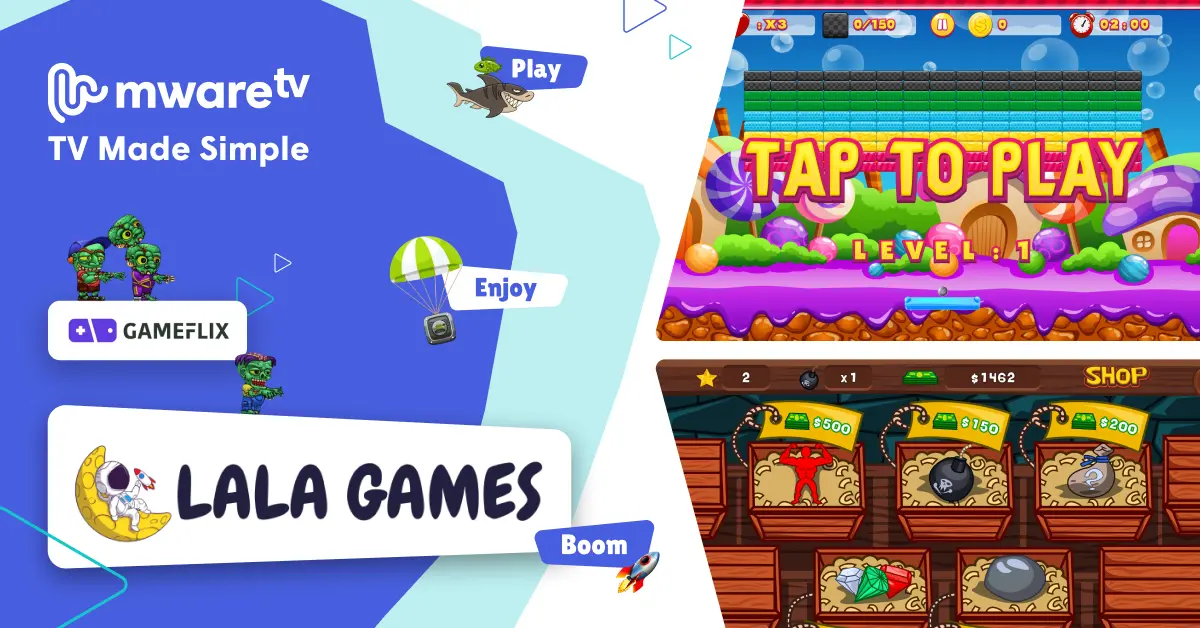
Stream Anywhere, Anytime: How Content Delivery Impacts Your TV on Various Devices

Envision yourself snuggled on the couch, ready to enjoy a marathon of your favorite show. But wait! The video keeps buffering, ruining the whole vibe.
Sounds familiar?
This frustrating experience is a symptom of a bigger problem – ineffective content delivery networks or CDNs. These invisible powerhouses are responsible for how smoothly videos stream across the globe.
The ability to seamlessly stream content across an array of devices has become not just a convenience, but a necessity for modern viewers. This article delves into the profound influence of content delivery on TV accessibility, and how robust systems, exemplified by MwareTV, play a pivotal role in this revolution.
The Significance of Content Delivery
Content delivery, in the context of television, refers to the process of distributing audio and video content to a diverse range of devices. This encompasses everything from smartphones and tablets to smart TVs and desktop computers. Effective content delivery systems ensure that viewers can access their favorite shows and movies seamlessly, regardless of their chosen platform.
Seamless Streaming Experiences
The hallmark of a well-designed content delivery system is its ability to provide viewers with a seamless streaming experience. This entails delivering content with minimal buffering, high video quality, and synchronization of audio and video. A robust system achieves this by employing techniques like adaptive bitrate streaming, which dynamically adjusts video quality based on the viewer’s network conditions.
Moreover, an effective content delivery system optimizes the delivery path, reducing the number of hops and potential points of failure. This leads to faster load times and a more reliable viewing experience, enhancing viewer satisfaction and retention.
Multi-Device Accessibility
With the proliferation of smart devices, viewers now expect to access their favorite content on a wide range of platforms. Content delivery systems play a pivotal role in meeting this demand, ensuring compatibility with various operating systems, screen sizes, and resolutions. This inclusivity guarantees that viewers can enjoy their preferred content on their terms, whether they’re using a smartphone on the go or a high-definition TV at home.
Exploring Content Delivery Networks (CDNs)
A CDN is like a superhighway for digital data, made to get content from the server right onto your device as fast as it can.
MwareTV uses CDNs to ensure that its streaming services are efficient and reliable. That’s why MwareTV leverages CDNs – they help deliver video content swiftly across various devices without buffering or delays.
No longer is this just about viewing television; it’s now all about having an immersive, on-demand media experience. With the effective use of CDNs by platforms like MwareTV, viewers can enjoy their favorite programs anytime with minimal interruptions – all thanks to technology.
Let’s explore some of the technology and techniques that will help create a more successful IPTV experience for providers and viewers alike.
Content Delivery Networks (CDNs)
Familiarize yourself with CDNs, which play a crucial role in content delivery. They distribute content across multiple servers strategically located around the world, reducing latency and ensuring faster access for viewers.
Adaptive Bitrate Streaming (ABR)
Understand the concept of ABR, a critical component of effective content delivery. This technology dynamically adjusts the quality of the video based on the viewer’s available bandwidth, ensuring smooth playback even in fluctuating network conditions.
Load Balancing
Learn about load-balancing techniques employed by content delivery systems. This process distributes traffic evenly across servers, preventing any one server from becoming overloaded and maintaining consistent performance.
Caching Mechanisms
Explore how content caching works. By storing frequently accessed content closer to the viewer, caching reduces the time it takes to retrieve and deliver content, resulting in faster load times.
Quality of Service (QoS)
Understand how QoS mechanisms prioritize and manage network traffic to ensure a consistent and reliable streaming experience. This is particularly important in environments with multiple connected devices.
Future Trends in Content Delivery Networks
The future of Content Delivery Networks (CDNs) promises a dynamic evolution in the realm of digital content distribution. Here are some pivotal trends shaping the landscape.
Edge Computing Integration
CDNs are moving towards edge computing, where content is processed closer to the end-user. This reduces latency and enables real-time applications, revolutionizing industries like gaming and IoT.
5G-Powered CDNs
The advent of 5G networks will amplify CDN capabilities, offering blazing-fast speeds and supporting high-quality, immersive content like augmented reality (AR) and virtual reality (VR).
AI-Enhanced CDN Optimization
Artificial Intelligence (AI) and Machine Learning (ML) algorithms will play a central role in CDN optimization. They’ll predict traffic patterns, analyze user behavior, and dynamically adjust content delivery strategies.
Security-First CDNs
With the rise of cyber threats, CDNs will increasingly prioritize security features. This includes DDoS protection, encryption enhancements, and advanced threat detection capabilities.
Video Streaming Optimization
As video streaming becomes ubiquitous, CDNs will focus on fine-tuning video delivery. This includes support for 4K, 8K, and even 360-degree videos, along with improved Adaptive Bitrate Streaming (ABR) for seamless playback.
IoT-Centric CDNs
The Internet of Things (IoT) demands efficient, low-latency data delivery. CDNs will adapt to cater to the unique requirements of IoT devices, enabling applications like smart cities and autonomous vehicles.
Serverless Architectures
CDNs will increasingly adopt serverless computing models, allowing for more agile, cost-effective, and scalable content delivery solutions.
Personalized Content Delivery
CDNs will leverage user data and AI-driven insights to deliver personalized content experiences, enhancing user engagement and retention.
These trends collectively point towards a future where CDNs will not only be faster and more reliable but also smarter, more secure, and better equipped to handle the diverse demands of an increasingly connected world.
Conclusion
When it comes to modern television, content delivery systems are becoming increasingly essential, enabling seamless access to a world of entertainment. As viewers continue to diversify their viewing habits across an array of devices, the significance of effective content delivery cannot be overstated. Platforms like MwareTV exemplify the cutting edge of content delivery technology, ensuring that viewers can enjoy their favorite content anytime, anywhere, and on any device.
By understanding the intricacies of content delivery, viewers and providers alike can unlock the full potential of this transformative technology, creating a viewing experience that is not just accessible, but extraordinary. Embrace the power of content delivery, and embark on a new era of television accessibility.



